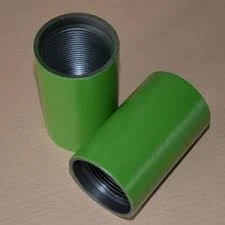- Afrikaans
- Albanian
- Amharic
- Arabic
- Armenian
- Azerbaijani
- Basque
- Belarusian
- Bengali
- Bosnian
- Bulgarian
- Catalan
- Cebuano
- Corsican
- Croatian
- Czech
- Danish
- Dutch
- English
- Esperanto
- Estonian
- Finnish
- French
- Frisian
- Galician
- Georgian
- German
- Greek
- Gujarati
- Haitian Creole
- hausa
- hawaiian
- Hebrew
- Hindi
- Miao
- Hungarian
- Icelandic
- igbo
- Indonesian
- irish
- Italian
- Japanese
- Javanese
- Kannada
- kazakh
- Khmer
- Rwandese
- Korean
- Kurdish
- Kyrgyz
- Lao
- Latin
- Latvian
- Lithuanian
- Luxembourgish
- Macedonian
- Malgashi
- Malay
- Malayalam
- Maltese
- Maori
- Marathi
- Mongolian
- Myanmar
- Nepali
- Norwegian
- Norwegian
- Occitan
- Pashto
- Persian
- Polish
- Portuguese
- Punjabi
- Romanian
- Russian
- Samoan
- Scottish Gaelic
- Serbian
- Sesotho
- Shona
- Sindhi
- Sinhala
- Slovak
- Slovenian
- Somali
- Spanish
- Sundanese
- Swahili
- Swedish
- Tagalog
- Tajik
- Tamil
- Tatar
- Telugu
- Thai
- Turkish
- Turkmen
- Ukrainian
- Urdu
- Uighur
- Uzbek
- Vietnamese
- Welsh
- Bantu
- Yiddish
- Yoruba
- Zulu
casing threads and couplings
Understanding Casing Threads and Couplings in Oil and Gas Industries
Casing threads and couplings are critical components in the oil and gas industry, particularly in the drilling and completion phases of well construction. The primary function of casing is to support the walls of a borehole, prevent collapse, and protect the freshwater aquifers from contamination due to oil and gas exploration activities. Understanding the nuances of casing threads and couplings is vital for ensuring operational efficiency and the integrity of the well.
Casing is typically made from steel or other robust materials designed to withstand extreme conditions encountered during drilling. The casing comes in various sizes and specifications, and the type of casing thread used can significantly impact the performance and reliability of the casing system. Casing threads are essential for creating connections between different sections of casing and for attaching the casing to other components such as pumps and valves.
There are several types of casing threads, with API (American Petroleum Institute) standards being the most widely recognized in the industry. API threads are designed to provide a leak-tight seal while allowing for easy installation and removal. They come in several profiles, including Buttress, API Regular, and Premium threads, each suited for specific pressures and temperatures encountered in different well environments.
casing threads and couplings

Couplings play a crucial role in joining the casing strings together. These are short lengths of pipe, threaded at both ends, designed to connect two casing pipes. The selection of couplings must correspond to the threading of the casing to ensure a reliable and robust connection, capable of withstanding the stresses involved in drilling, completion, and subsequent production activities.
The integrity of these connections is paramount, as failures can lead to significant issues, including loss of circulation, fluid contamination, and costly operational delays. To mitigate risks, regular inspections and adherence to proper installation techniques are essential. Engineers must also consider external factors such as corrosion and mechanical stress, which can compromise casing threads over time.
In summary, the selection and proper use of casing threads and couplings are essential for the successful operation of oil and gas wells. By adhering to industry standards and understanding the characteristics of various threading systems, operators can enhance the safety, efficiency, and longevity of their well construction projects. Continuous innovation in materials and design further promises to improve the reliability of these critical components in the challenging environments faced by the oil and gas sector.
-
Tubing Pup Joints: Essential Components for Oil and Gas OperationsNewsJul.10,2025
-
Pup Joints: Essential Components for Reliable Drilling OperationsNewsJul.10,2025
-
Pipe Couplings: Connecting Your World EfficientlyNewsJul.10,2025
-
Mastering Oilfield Operations with Quality Tubing and CasingNewsJul.10,2025
-
High-Quality Casing Couplings for Every NeedNewsJul.10,2025
-
Boost Your Drilling Efficiency with Premium Crossover Tools & Seating NipplesNewsJul.10,2025







